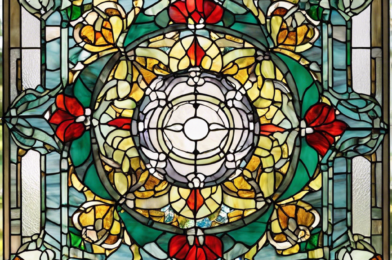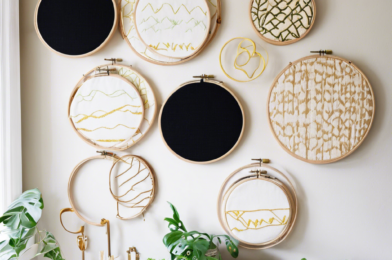Mosaic art is a timeless and beautiful craft that can be created and enjoyed by anyone. With a bit of creativity and some simple materials, you can make your own stunning mosaic art pieces to decorate your home or even to give as personalized gifts. So, if you’re ready to try your hand at this ancient art form, here’s a step-by-step guide to getting started with DIY mosaic art.
First, gather your materials. For your first mosaic project, it’s best to start with simple materials that are easy to work with. Standard mosaic tiles made of glass or ceramic are a good option and can be found at most craft stores. You’ll also need a base for your mosaic, such as a wooden plaque, a flower pot, or a picture frame. Finally, you’ll need some adhesive, grout, and basic tools like a tile cutter and a sponge.
Take time to plan your design. Before you start adhering tiles to your base, it’s important to have a clear idea of your design. Sketch out your design on paper, considering factors such as color, tile placement, and overall composition. If you’re feeling stuck, you can find countless mosaic art ideas and patterns online for inspiration. Keep in mind that you don’t have to be an artist to create something beautiful – even simple designs can be very effective.
Now, it’s time to start tiling. Gently spread your adhesive onto your base, following your sketch as a guide. Start placing your tiles, gently pressing them into the adhesive. Take your time and work in small sections to avoid messiness and uneven spacing. If you need to cut tiles to fit a specific space or shape, use your tile cutter for clean, precise cuts. Remember, you don’t have to fill every inch with tiles – leaving some spaces between tiles will add interest and texture to your design.
Once you’ve completed your design and allowed the adhesive to dry, it’s time to grout. Grout comes in a variety of colors, so choose one that complements your tiles and overall design. Carefully spread the grout over your tiles, pushing it into the spaces between the tiles with a grout sponge. Again, work in small sections and wipe away any excess grout with a damp sponge. Finally, let the grout dry and then polish your mosaic art to a shine.
You can display your finished mosaic art indoors or out, adding a unique and personal touch to your space. Don’t be afraid to experiment and try new techniques as you create more mosaic pieces. With practice, you’ll develop your own style and find great satisfaction in bringing your artistic visions to life. Happy crafting!
To expand your skills, you can explore more advanced techniques such as creating custom-shaped tiles, incorporating found objects into your mosaics, or experimenting with different grouting styles. Over time, you may even want to invest in specialized tools and materials to take your mosaic art to the next level. Remember, part of the beauty of mosaic art is that it is accessible to everyone, and there is no limit to the creative directions you can explore.
If you’re looking for mosaic art ideas, you’ll find that inspiration is everywhere. Nature, for example, provides a wealth of patterns and color palettes, from the veining in leaves to the intricate patterns of bird feathers or the vibrant hues of wildflowers. You can also draw inspiration from architecture, textiles, or even everyday objects that capture your imagination. The key is to keep an open mind and a curious eye as you go about your daily life. Keep a sketchbook handy to jot down ideas or quick sketches of potential mosaic designs inspired by your surroundings.
As you develop your mosaic art skills, you may also want to delve into the rich history of this art form. Mosaic art has a long and fascinating legacy, dating back to ancient times. From the intricate mosaics of Pompeii to the dazzling tile work of Moorish architecture, each era and culture has contributed its own unique style and techniques. Learning about the history of mosaic art can not only provide you with creative inspiration but also a deeper appreciation for the timeless beauty of this craft.
When creating mosaic art, safety should always be a priority. Mosaic tiles, cutters, and other tools can pose certain risks if not used properly. Always follow safety guidelines and recommendations provided by the manufacturers. Wear protective gear, such as safety goggles and gloves, when cutting tiles to prevent injuries. Keep your work area clean and tidy, ensuring that tools and materials are stored safely and out of the reach of children or pets. By taking these simple precautions, you can ensure that your mosaic art experience is both enjoyable and safe.
If you plan to display your mosaic art outdoors, it’s important to take into account the durability of your materials. Opt for tiles and adhesives that are specifically designed for outdoor use, as they will be able to withstand varying weather conditions and UV exposure. Proper sealing is also key to protecting your mosaic from the elements. Sealants create a barrier that repels water, prevents staining, and guards against mildew or mold growth. With the right materials and sealing techniques, your outdoor mosaic art can remain vibrant and beautiful for years to come.
In addition to the practical and safety considerations, don’t forget to embrace the creative freedom that mosaic art offers. Experiment with different color combinations, tile sizes, and patterns to find your unique style. You can even incorporate found objects into your mosaics, such as broken china, beads, or glass gems, for a truly distinctive touch. Let your imagination run wild and don’t be afraid to break the rules – after all, some of the most innovative and captivating art emerges from pushing the boundaries of convention.
As you progress in your mosaic art journey, you may want to explore the business side of this craft by selling your creations. Whether it’s through an online store, local craft fairs, or consigning your pieces to shops, there are numerous avenues for turning your hobby into a source of income. Building an online presence through social media and a dedicated website can also help you reach a wider audience and showcase your unique style to potential customers. With a bit of entrepreneurship, your passion for mosaic art can become a rewarding business venture.
Lastly, remember that the mosaic art community is a valuable resource. Join online forums, follow mosaic artists on social media, and consider joining a local or virtual mosaic art group to connect with fellow enthusiasts. Sharing techniques, seeking feedback, and collaborating with others can enhance your skills, spark new ideas, and foster a sense of community. Through these connections, you’ll not only gain artistic inspiration but also make lasting friendships with people who share your passion for this timeless art form. So, don’t hesitate to reach out and engage with the vibrant mosaic art community.









